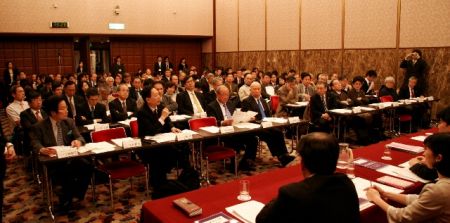Three Terms of Excellent NPO Standard

I would like to explain why we decided to establish the concept of Excellent NPOs. The reason for this is because we had a shared anxiety on the state of non-profit organizations in Japan today. We were concerned that non-profit organizations may not have been good partners for citizens who wish to contribute to society. We thought that the main reasons for not-for-profit organizations not being able to serve the above mentioned role were the following three.
First, many organizations lack structural stability to maintain sound and continuous operations. Secondly, many organizations wish to cause social change, but in reality, most of them lack structures which will enable them to pursue mid-term and long-term goals. The final and most serious concern was that many organizations do not promote donations and volunteerism, which are both critical forms of citizen participation in civil society. To make matters worse, there had been recent cases which hurt the reputation of the whole non-profit sector in Japan.
Thus, we went back to the basics and held discussions on what an ideal non-profit organization is. For 2 years, we had held continuous conferences with academics and practitioners to discuss this topic. In order to materialize the fruit of our discussions, we created the criteria for Excellent NPOs.
In general, when evaluating or certifying an organization, the evaluation or the certification is usually on an organization's governance or finance. Evaluations of Excellent NPOs diverge from this, since Excellent NPO evaluations stress 3 aspects of an organization.
The first aspect is Innovativeness, the second is Citizenship and the third is Structural Stability. Innovativeness indicates the ability to effectively engage with social issues. Citizenship indicates an organization's ability to offer channels of civil participation, such as volunteering or donating, to the wider public. Structural Stability not only indicates the ability to maintain stable and continuous operations, but also the ability to develop and expand its operations. This ability should be reflected in governance, in fundraising and in human resources development. We made 32 criteria based on the three aspects I have just mentioned.
In addition, we made 100 provisions based on the 32 criteria so that organizations can self-check their strengths, weaknesses and future challenges. We will create and publish booklets on these criteria and provisions in the near future.
Organizations applying for certifications of Excellent NPOs do not need to perfect its operations immediately; as a member of the organization that hosts the Excellent NPO awards, I expect the award to be an opportunity for applicants to brush their operations up and work towards the ideal. For those applicants who wish to brush themselves up, we hope that they will become Declaring Organizations. Declaring Organizations can use the self-check sheet to self-evaluate their operations. By utilizing the Declaring Organizations system, we hope to visualize motivated not-for-profit organizations to the public eye.
In addition, we plan to organize trainings and other services to support Declaring Organizations' efforts. Our ultimate goal is to introduce the public to not-for-profit organizations who proactively seek to improve the quality of their operations. We wish to contribute in shortening the distance between citizens and non-profit organizations, as well as to contribute in creating a strong civil society.
Post a comment